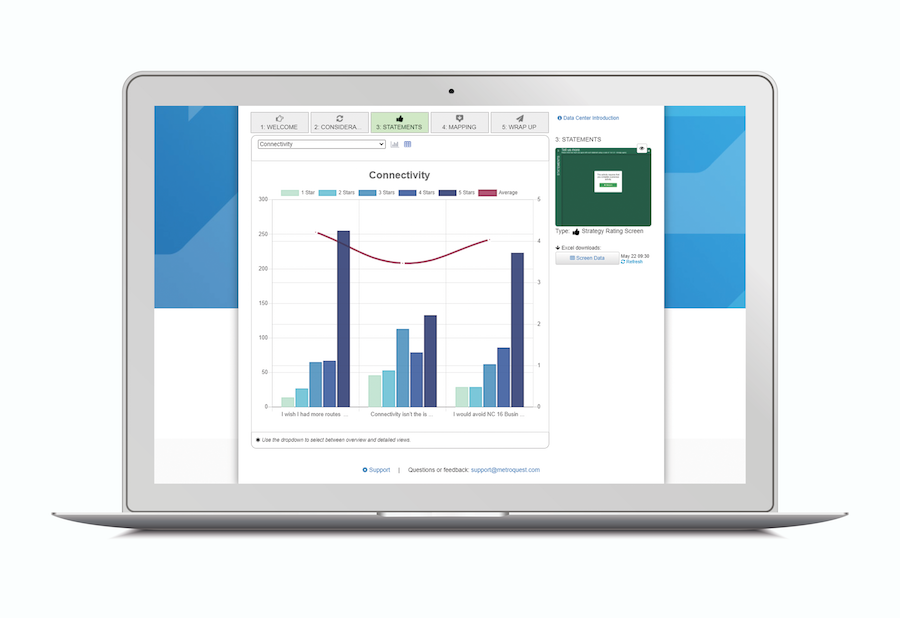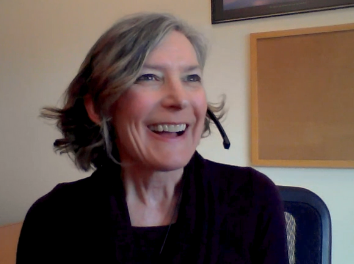Top 6 Things That Successful Online Community Engagement Projects Have in Common

This blog was originally published on February 9, 2016.
Let’s take a look at what’s working best in online community engagement
Over the years, our team has studied several successful case studies and interviewed hundreds of planning and public engagement experts from across the nation, helping us uncover the best practices for succeeding in the realm of online community engagement.
We’ve recently delved into topics like achieving equity in public engagement, how smaller projects can meet their engagement goals, and started to highlight monthly surveys that demonstrate extraordinary success.
Drawing on our experiences, case studies and research, we’ve identified the key elements that contribute to a successful digital engagement project. Let’s explore the top 6 characteristics that winning projects have in common…
1. A 5-Minute Experience
While it may seem counter-intuitive, the shorter you make the online experience, the more participants you’ll engage and the more public input you’ll collect.
The way that we pay attention and focus on tasks is changing, as social media and the information age means we have more and more competing for our attention. That means that most people will steer clear of providing input if it’s going to take up too much of their time. Planners that design the engagement experience to take up to 5 minutes or less get the most amount of public participation and informed feedback.
2. No Mandatory Registration
A comparative analysis that we did suggests that only one in ten participants are willing to provide personal information at the beginning of the engagement process.
Some of the best case studies we’ve examined used a simple twist on the registration process: asking for participant’s personal and demographic information at the end, when they’re already invested in the process and more willing to share.
3. Fun & Visual Interfaces
It pays off to incorporate elements that make the engagement experience more enjoyable for participants.
Plain, complicated, or unattractive sites will cause participants to wander away. The most successful engagement projects we’ve seen embed interactive elements and visually engaging components into the digital experience to help keep participants engaged and satisfied.
We all know the saying: a picture is worth a thousand words. That’s true and, as an added benefit, they are also communicate information 60,000 times faster than text and make the experience more memorable.
Whether you’re engaging with the public on Zoom or using an online forum or survey, incorporate visuals or mini games and interactive elements wherever applicable and possible. If you want a few more examples, check out our 1-minute video on why more visuals and less text make for more effective surveys!
4. Embedded Education
To gather representative data and informed public input, you must ensure participants have a good grasp of the context and are informed and educated about planning choices, decisions and trade-offs.
Successful online engagement projects find ways to educate participants along the way, while avoiding biased alternatives. For instance, asking participants to vote in favor of a scenario after educating them about the associated tradeoffs ensures that they are aware of the consequence of their choice, making their decision and input that much more meaningful. At the same time, by ‘gamifying’ the learning process, you can make it a breeze for participants!
5. A Focus on Quantifiable Input
It’s important to plan from the start how you will handle the input when it comes in. The most successful engagement projects we’ve seen use digital tools that can tabulate participants’ answers into quantifiable and easy-to-analyze results.
Plus, by keeping in mind the end result, you and your team will be better able to identify the exact types of questions and inputs that will give your technical team the information they need.
6. Promoting Like Mad
The movie ‘Field of Dreams’ got one thing wrong. When it comes to public participation, the adage “if you build it, they will come” is terribly naïve.
In the online world, many people think if they launch an engagement opportunity, people will come flocking to participate. Veterans in the business, however, know that it isn’t that easy.
A key to the most successful projects we’ve seen is promotion. To compete with the clutter of information that bombards people every day, you need to have a strong promotional strategy to get the input opportunity into the eyes of you prospective participants and to keep the momentum going throughout the engagement period.
Your promotional efforts can make or break the success of your study! For example, with clever promotions and partnerships, this agency in Southwest Idaho was able to get over 11,000 participants on their transit study. Check out our list of 10 tips to consider when promoting your next project to get started!
That’s our list of top 6 common characteristics of the most successful projects we’ve looked at. We’d be curious to hear from others in the field. What patterns and characteristics have you noticed?
COMPASS Gathers Input from 18,500+ Participants to Plan Future Transportation
COMPASS achieved incredible public engagement results, at one point receiving over 4000 Survey responses in one day. In this case study, Amy Luft walks us through the strategies that led to their success, including social media promotions, traditional media and community partnerships!


